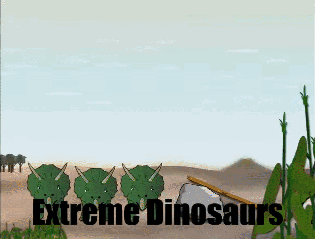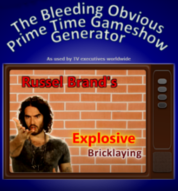Archaeology May Soon Be a Thing of the Past
Scandal has rocked the world of archaeology now that it has emerged that a group of influential academics is buying up ancient artefacts so that they can be reburied for future generations. Professor Tanya Bread - head of digging stuff up at Princes College, Edinburgh - has defended the scheme, claiming that it is necessary to safeguard the future of her profession. "People who dig stuff up," she said at a recent conference on bones and bits of old pottery in Amsterdam, "are rapidly running out of stuff to dig up, and there is a very real risk that the people who dig stuff up in the future will have no more stuff to dig up."
"I deplore Professor's Bread's insistence on finishing a sentence on a preposition," said Amara Shovel, head of the International Federation of Archaeologists, Excavators, Delvers and Dredgers. "But on this subject, she is absolutely correct. For some time now, we have been concerned that ours is a dying profession, and our members have every reason to be concerned for their livelihoods. The 'Buy Back and Rebury Initiative' offers a workable solution, which we can all pin our hopes on.
"I mean, on which we can all pin our hopes. Sorry."
It could be said that the science of archaeology has been a victim of its own success. As more and more items get disinterred, so historical finds become harder to... well... find. A successful archaeologist these days has to dig much deeper than they would have done two hundred years ago. Professor Bread explained:
Things were just lying about on the ground
"The discovery and study of antiquities in its modern sense really came into being in Victorian times," the Professor told us. "Back then it was a breeze because things were just lying about on the ground: swords, treasure chests, galleons and so forth. Once this had all been gathered up, people had to start digging. At first, you could find stuff just below the surface, and it was of a much greater quality. But, as time went by, we had to dig deeper and most of the material was of limited value."
"By which you mean its value in terms of its historical significance?" we asked her.
"By which I mean its value in terms of the amount of cash that a collector is prepared to pay for it," Professor Bread replied. "Oh, any archaeologist worth their salt will tell you that it's all about piecing together the past, but the truth is that that kind of attitude doesn't put smoked salmon and caviar on the table. We're looking for shiny stuff encrusted with precious stones; things that dumb tax avoiders with far too much cash are willing to 'preserve for the nation'. Does that sound mercenary?"
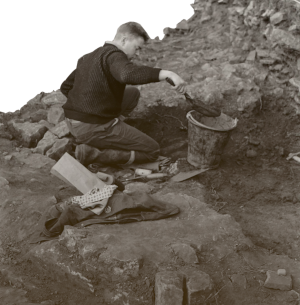
"Yes."
"Good," she said. "Welcome to the real world. Anyway, the deeper we dig, the more rubbish we find. So, whereas our Victorian predecessors would regularly turn up knights dressed in solid gold armour carrying diamond-studded shields, the most we can hope for is a bit of old pottery. But as long as it's old - and we can convince someone that it's particularly rare or significant - then we can still turn a profit. But the deeper you get, the less of a return. Once you've gone past the Vikings, past the Romans, past the Celts and the Picts and all that lot, then you arrive at the stone age and, as the name implies, that's just a lot of rocks. That's no good to anyone unless you're looking to gravel your drive."
Professor Bread explained that the stone age represented their limit. Go any deeper and archaeologists would risk stepping on the toes of the dinosaurologists, and those people can get really stroppy. The upshot of all this is that in recent years a typical archaeologist's revenue has come not from the sale of artefacts, like it did in the good old days, but from lecture fees, publishing deals and appearances on TV history documentaries. But even this work will dry up once they get to the point when all they can dig up is mud. Hence, the scheme to re-seed historical sites with previously discovered artefacts.
However, many collectors and curators are less keen on the idea. We visited Marvin Obelisk at the New York Museum of Dirty and Archaic Things. It was with little enthusiasm that he showed us around their latest collection.
"It's just becoming impossible to acquire anything of any interest these days," he said. "All the good stuff is being snapped up and reburied, while we have to make do with tat. I mean, look at this."
This is Wedgewood. Hideous, isn't it?
He reached into a cabinet and pulled out a teacup. "This is Wedgewood. Eighteenth century. Hideous, isn't it?" He smashed it on the ground and it exploded in a shower of shards. "It's the kind of thing your grandmother might have in the back of her cupboard. Who wants to see something like that? And this one."
He took out a saucer. This looked quite delicate and was painted with intricate patterns. We told him it looked nice, but he sneered.
"Nice?" he said. "Visitors don't want nice. They want to see something spectacular. You know what this is? It's a Ming saucer. Not a Ming vase - oh no! A goddamn saucer. Do you have any idea how foolish you feel when a member of the public comes up to you and says, 'Say buddy, where are all the Ming vases?' and you have to tell them that we haven't got any, but we've got a saucer and maybe a side plate you can take a look at instead?"
He smashed it and strode over to a nearby picture. We thought we recognised the style. "Look, see," he said. "This is a genuine van Gogh, but it's not one of his famous ones. Awful, isn't it?" He slashed it with a screwdriver.
We were only there twenty minutes, but such was his depth of feeling that in that time Mr Obelisk managed to trash half the collection. This exemplifies the situation as it stands at the moment: archaeologists are frantically reburying genuinely valuable objects, while museums are frustratedly destroying the rubbish that's left over. Ironically, this means that junk is becoming scarce and therefore more valuable, so our advice to readers is to check what your grandma has in the back of her cupboard. She could be sitting on a fortune.
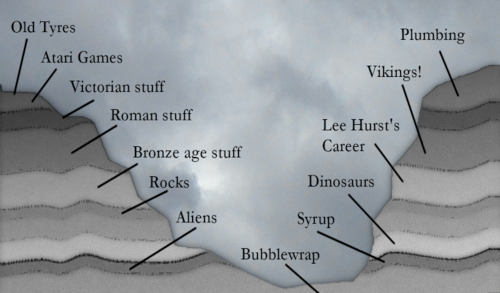
Taken from The University of the Bleeding Obvious Annual 2022
Click here to download it for just £1 and get access to all our other annuals and special releases at the same time.


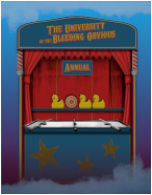
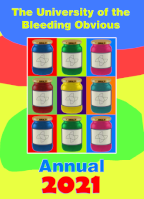

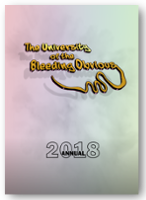
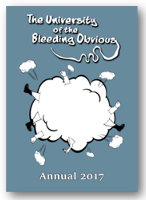

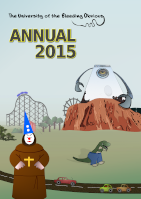

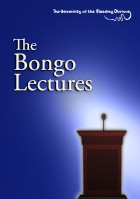
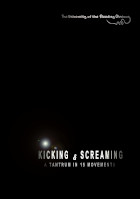
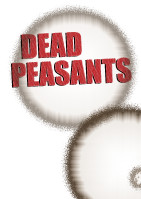
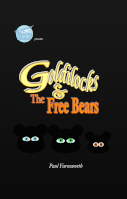
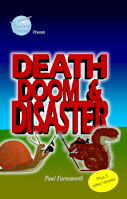
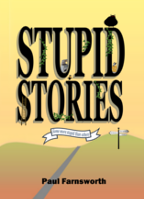





 Galactic Phrasebook
Galactic Phrasebook Shark Fishing
Shark Fishing Songs of Inspiration and Devotion
Songs of Inspiration and Devotion Metal Detecting
Metal Detecting Invitation to a Monks' Tea Party
Invitation to a Monks' Tea Party Local Heroes
Local Heroes Earwax
Earwax The Creeper and Other Motorists
The Creeper and Other Motorists Moonbeam Fresh Air System
Moonbeam Fresh Air System Why Your Printer Doesn't Work
Why Your Printer Doesn't Work